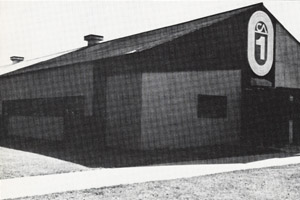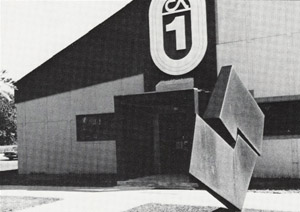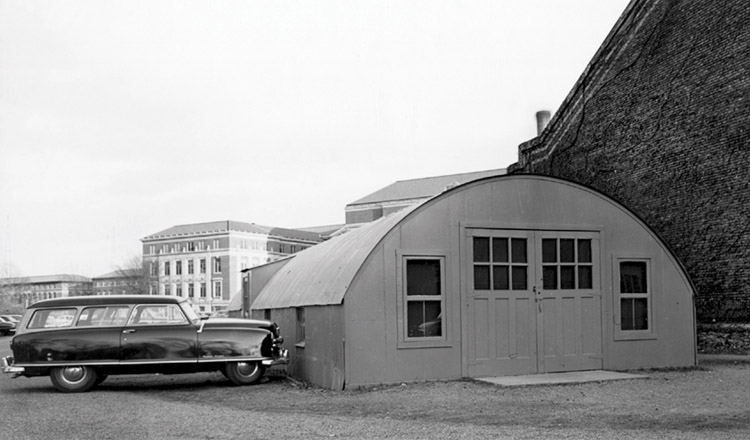For a handful of temporary barracks buildings on the West Lafayette campus, “temporary” turned out to mean almost 57 years.
They were the last cluster of temporary structures on campus, standing near Stadium and Northwestern Avenues, and it took from February to June 2004 to dismantle them. When they went up in summer 1947 with similar buildings in the same area, they joined dozens of other stopgap structures rising to meet the flood of students on the GI Bill. Erected with the help of student workers, the buildings were used as chemistry and physics classrooms and laboratories, naval science and civil engineering spaces, the office for veterans administration, and warehouses.

Purdue’s enrollment swelled from 3,356 students in March 1945 to 11,472 in October 1946. The University couldn’t raise new buildings fast enough; supplies were often short and many other universities, facing similar growth, were clamoring for materials too. Though the temporaries that were constructed were often referred to as Quonset huts — akin to small-scale airplane hangars with rounded roofs — not many were actually Quonset huts. The last Quonset huts on the central campus came down in 1969, and the last one at the Purdue Airport was removed in 1999.
In March 1972, a fire in Matthews Hall forced the creative arts offices to relocate to the barracks on Stadium Avenue. The move was meant to be temporary, but in 1975, the buildings, which had been labeled FWA (Federal Works Administration), were renamed Creative Arts Buildings One through Five.

In the summer of 1976, a refurbishment brought dramatic changes to the appearance of the barracks, and the drab buildings were changed into modern classrooms with burnt-orange exteriors; safer, more attractive windows and doors; and new landscaping, which included large public-art sculptures. The visual arts program remained in the former barracks until 2003, and the spaces comprised classrooms, studios, offices, and the Ralph G. Beelke Memorial Gallery. Now named the Patti & Rusty Rueff School of Design, Art, and Performance, it is housed in Yue-Kong Pao Hall.

